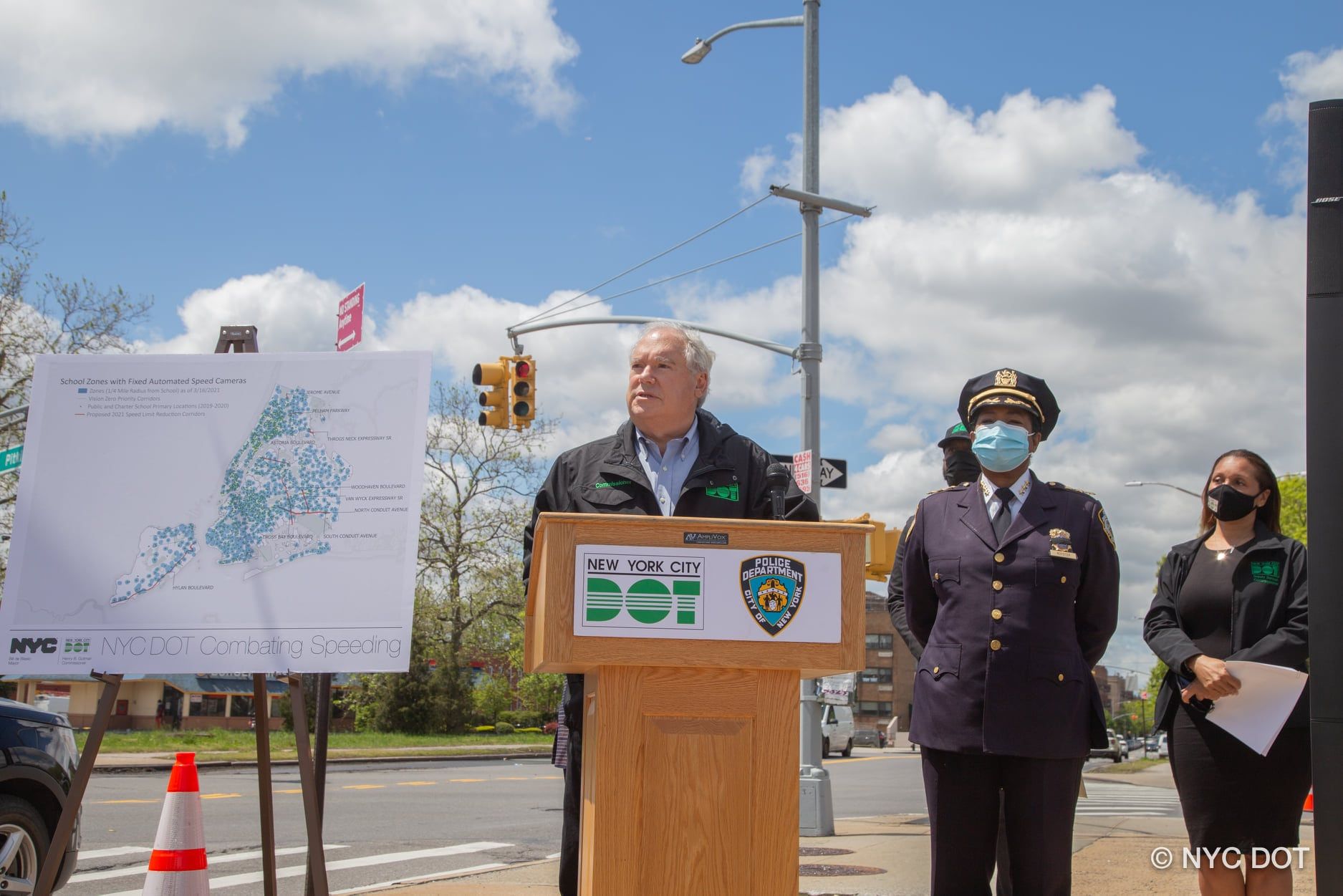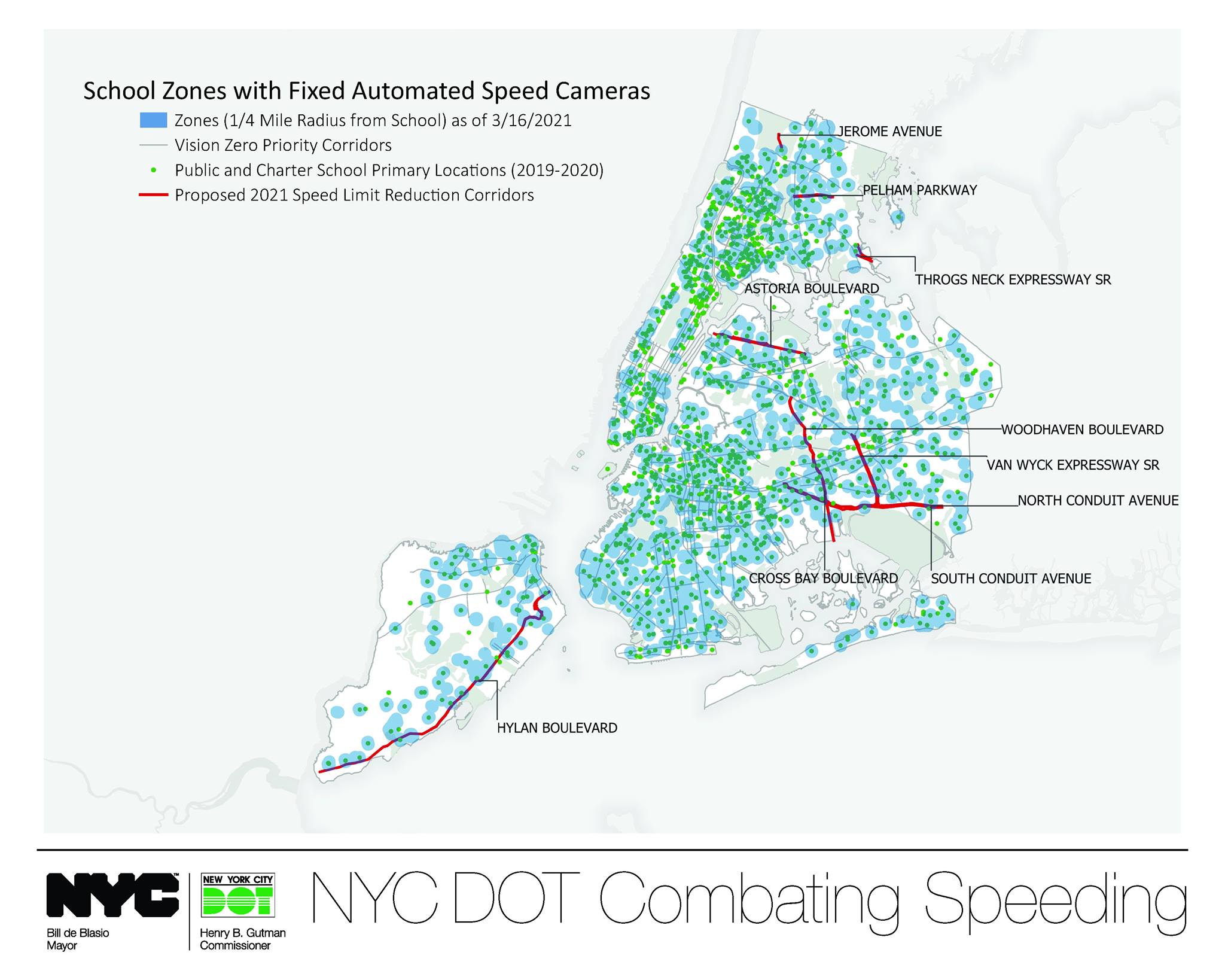City Lowers Speed Limit on Conduit Boulevard in Cypress Hills


The city is lowering the speed limit on a major eastern Brooklyn thoroughfare in an attempt to reduce crashes and save lives.
Mayor Bill de Blasio announced this morning that the city will reduce speed limits on several major streets throughout the city, including Conduit Boulevard in Cypress Hills. The max speed on the 1.9-mile road between Atlantic Avenue to Sutter Avenue will be reduced from 35 mph to 30 mph.
Conduit Avenue, which connects with the Boulevard at Sutter Avenue and extends into Queens, will see a similar speed reduction.
The Mayor’s speed limit announcement kicks off what the city is calling “Streets Week!,” a series of transportation and open space policy announcements in support of the city’s Vision Zero initiative designed to eliminate traffic fatalities.
It also comes less than a week after the Mayor called on the state legislature to pass the Crash Victim Rights and Safety Act, a set of bills designed to take action against dangerous driving.
“Vision Zero has revolutionized traffic safety action in New York City and beyond, but its work isn’t finished until every New Yorker is safe on the streets. Telling drivers to slow down – and working closely with the NYPD to hold dangerous drivers accountable – will save lives and make our city safer,” de Blasio said.
In all, speed limits will be reduced on about 45 miles of city streets with high crash rates in every borough except Manhattan. All the impacted streets have existing speed limits of 30 mph or higher. The standard limit on most city roadways is 25 mph.

New speed limits will go into effect as updated signage is posted in the coming weeks.
The NYPD will also conduct a weeklong pedestrian and cyclist “safety enforcement blitz” this week to crack down on speeding drivers around the city. Enforcement will be focused at “specific intersections and the corresponding corridors where the data shows a high frequency of pedestrian and cyclist injuries as a result of being struck by a vehicle,” according to a press release provided by the city.
The Brooklyn section of Conduit Boulevard has been the site of at least 14 crashes so far this year, with many more occurring on the longer Queens portion of the roadway. In 2019, a man was killed in a hit-and-run while crossing the street in the early morning.

The highway-style truck route (NY Route 27) features three traffic lanes in each direction, which are separated by a large grassy median. Conduit Avenue and Boulevard were originally conceived as part of the Sunrise Highway, which first opened in 1929. Shortly after the Belt Parkway opened in 1940, Conduit Boulevard was expanded to a six-lane highway, and widened to create the median.
Proposals in the ensuing decades to use the space for both more roads and later for green space have thus far come to naught. But in 2016, DOT added additional pedestrian crossings to Conduit Boulevard, and in November, the agency made further improvements to an intersection that connects South Conduit Boulevard with Crescent and Forbell streets.
Last year, the city’s Department of Transportation lowered speed limits by 5 MPH on eleven corridors citywide, including Flatbush Avenue, Shore Parkway Service Road and Dahlgren Place in Brooklyn. The year before that, the city lowered the speed limit on Third Avenue in Sunset Park in response to a spate of fatal crashes there.
The mayor’s latest announcement comes weeks after a new data analysis from the advocacy group Transportation Alternatives found that 2021 is on track to be the second-worst year for traffic fatalities during de Blasio’s mayoralty.
Through April 30, 70 New Yorkers have been killed in traffic incidents citywide, the most since 2014, when de Blasio first introduced his Vision Zero plan. Brooklyn accounts for 36 of those fatalities, the highest number for the borough since the start of de Blasio’s first term.
In a statement, Transportation Alternatives praised the Mayor’s move to lower speed limits.
“Slower speeds save lives,” the group’s executive director, Danny Harris, said in a statement. “When looking at crash data, each mile per hour increase in speed results in nearly a three percent increase in the fatality rate.”
But he also said the change “will be even more effective when coupled with physical redesigns of streets and automated enforcement” and called on the state to take further action.
“Expanding the speed safety camera program and lowering the speed limit further are key planks of the Crash Victim Rights and Safety Act in Albany, and we will continue working with the de Blasio administration to urge the state legislature to pass the entire package this year,” Harris said.





